IEC-TC69-WG7-N23-020-69_529_DTS
INTERNATIONAL ELECTROTECHNICAL COMMISSION
IEC 61980: Electric vehicle wireless power transfer (WPT) systems –
Part 2: specific requirements for communication between electric road vehicle (EV) and infrastructure with respect to wireless power transfer (WPT) systems
69_529e_DTS
FOREWORD
INTRODUCTION
1 Scope
2 Normative references
3 Terms and definitions
3.201
3.202
4 Abbreviations
5 Communication of WPT systems
5.1 General
5.2 System architecture
5.3 General system requirements
5.3.1 General
5.3.2 Interoperability requirements
5.3.3 System configuration
5.3.4 Communication security
5.3.5 Timing
6 Power transfer process with respect to communication
6.1 General
6.2 Overview of Operation process Activities
6.3 Activities
6.3.1 Communication setup and service selection
6.3.2 Reject WPT Session
6.3.3 Fine positioning
6.3.4 Pairing
6.3.5 Final compatibility check
6.3.6 Initial alignment check
6.3.7 Start power transfer
6.3.8 Time scheduled power transfer (informative)
6.3.8.1 General
6.3.8.2 Power saver wake up
6.3.8.3 Sleep/power saver
6.3.9 Perform power transfer
6.3.10 Stop power transfer
6.3.11 WPT session
6.3.12 EV leaves WPT spot
6.3.13 Safety monitoring & diagnostics
6.3.13.1 General
6.3.13.2 Continuous alignment check
6.3.13.3 Communication link monitoring
6.3.14 Terminate communication
6.3.15 Terminate safety monitoring & diagnostics
6.3.16 Wake up after power outage
7 Control process states
7.1 Supply device state definitions
7.1.1 Supply device state diagram
7.1.2 Stand by (WPT_S_SB)
7.1.3 Service initiated (WPT_S_SI)
7.1.4 WPT Session rejected
7.1.5 Awaiting alignment (WPT_S_AA)
7.1.6 Idle (WPT_S_IDLE)
7.1.7 Power transfer (WPT_S_PT)
7.1.8 Service terminated occupied (WPT_S_STO)
7.1.9 Out of service (WPT_S_OOS)
7.1.10 Sleep Mode WPT_S_SLP
7.2 Supply device state transitions
7.3 EV state definitions
7.3.1 EV state diagram
7.3.2 Stand by (WPT_V_SB)
7.3.3 Service initiated (WPT_V_SI)
7.3.4 Awaiting alignment (WPT_V_AA)
7.3.5 Idle (WPT_V_IDLE)
7.3.6 Power transfer active (WPT_V_PT)
7.3.7 Off (WPT_V_OFF)
7.4 EV state transitions
7.5 Exception handling
7.5.1 General
7.5.2 Supply device exception handling (WPT_S_ERR)
7.5.3 EV exception handling (WPT_V_ERR)
7.5.4 Exception descriptions
8 Communication parameter for WPT systems
8.1 General
8.2 General Parameters
8.3 Communication Setup
8.4 Service Selection
8.5 Fine Positioning
8.5.1 General
8.5.2 Starting fine positioning
8.5.3 Fine positioning data exchange
8.5.4 Terminating Fine Positioning
8.6 Pairing
8.6.1 General
8.6.2 Start Pairing
8.7 Initial alignment check
8.7.1 General
8.7.2 Initial alignment check request/response
8.8 Start Power Transfer
8.8.1 General
8.8.2 Final compatibility check
8.9 Perform Power Transfer
8.10 Stop Power Transfer
8.11 Terminate Communication
8.12 Exception Handling
9 Message sequences of communication with WLN
9.1 General
9.2 Messages of communication for power transfer
9.3 Communication setup
9.4 Service Selection
9.5 Fine positioning
9.6 Pairing
9.7 Final compatibility check
9.8 Initial alignment check
9.9 Start power transfer
9.10 Perform power transfer
9.11 Stop power transfer
9.12 Terminate communication
Annex A (informative) Use cases
A.1 General
A.2 Use case descriptions
A.2.1 UC Select supply device
A.2.2 UC Service Selection
A.2.3 UC Fine positioning
A.2.4 UC Start power transfer
A.2.5 UC Perform power transfer
A.2.6 UC Safety monitoring and diagnostics
A.2.7 UC Stop power transfer
A.2.8 UC Power saver mode (optional)
Annex B (informative) Physical definition of links and signals
B.1 System architecture
B.2 WLN
B.3 SR Signal
B.4 LF Signal (EV to supply device)
B.5 Magnetic Vector (EV to supply device)
B.6 LPE
Annex C (informative) Usage of Supplemental Signals
C.1 Fine positioning
C.1.1 Manual
C.1.2 Low power excitation (LPE)
C.1.3 LF Signal
C.1.4 Magnetic Vector
C.2 Pairing
C.2.1 Low power excitation (LPE)
C.2.2 SR Signal
C.2.2.1 Coding Pattern specification
C.2.3 LF Signal
C.2.4 Magnetic vector
C.3 Initial alignment check
C.3.1 Efficiency check
C.3.2 RSSI Method
C.3.3 Secondary voltage check
C.3.4 Coupling check
C.4 Continuous alignment check
C.4.1 Efficiency Check
C.4.2 SR Signal
C.4.3 Coupling check
C.5 Safety Signal
C.5.1 SR Signal
Bibliography
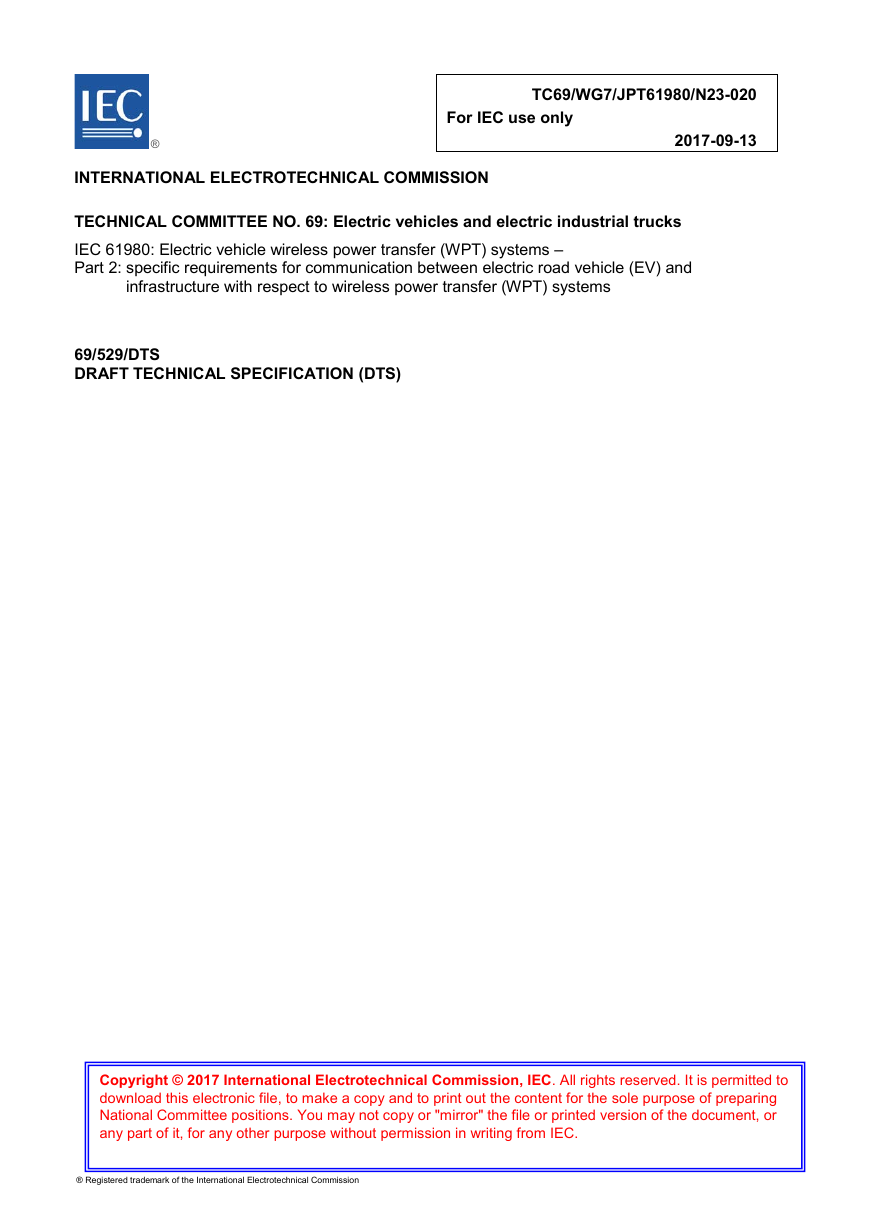
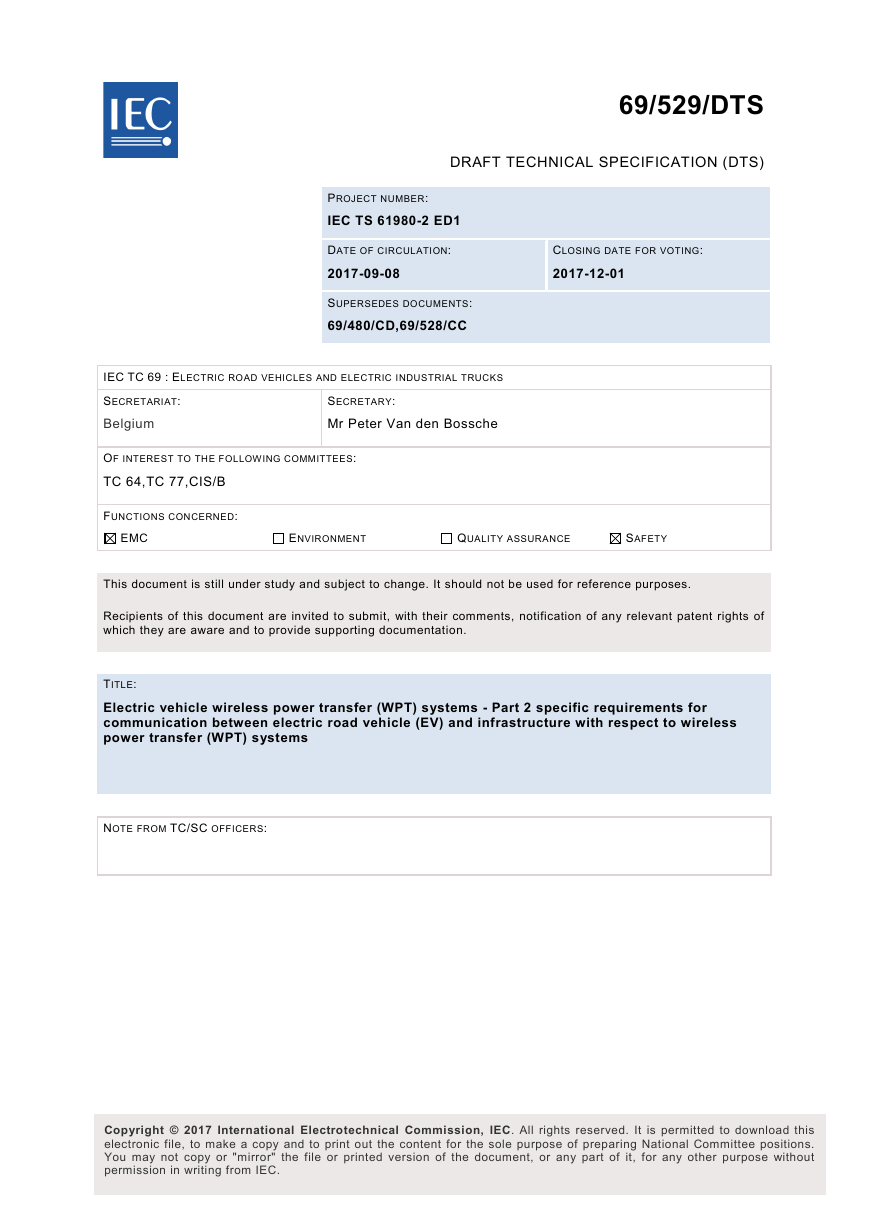
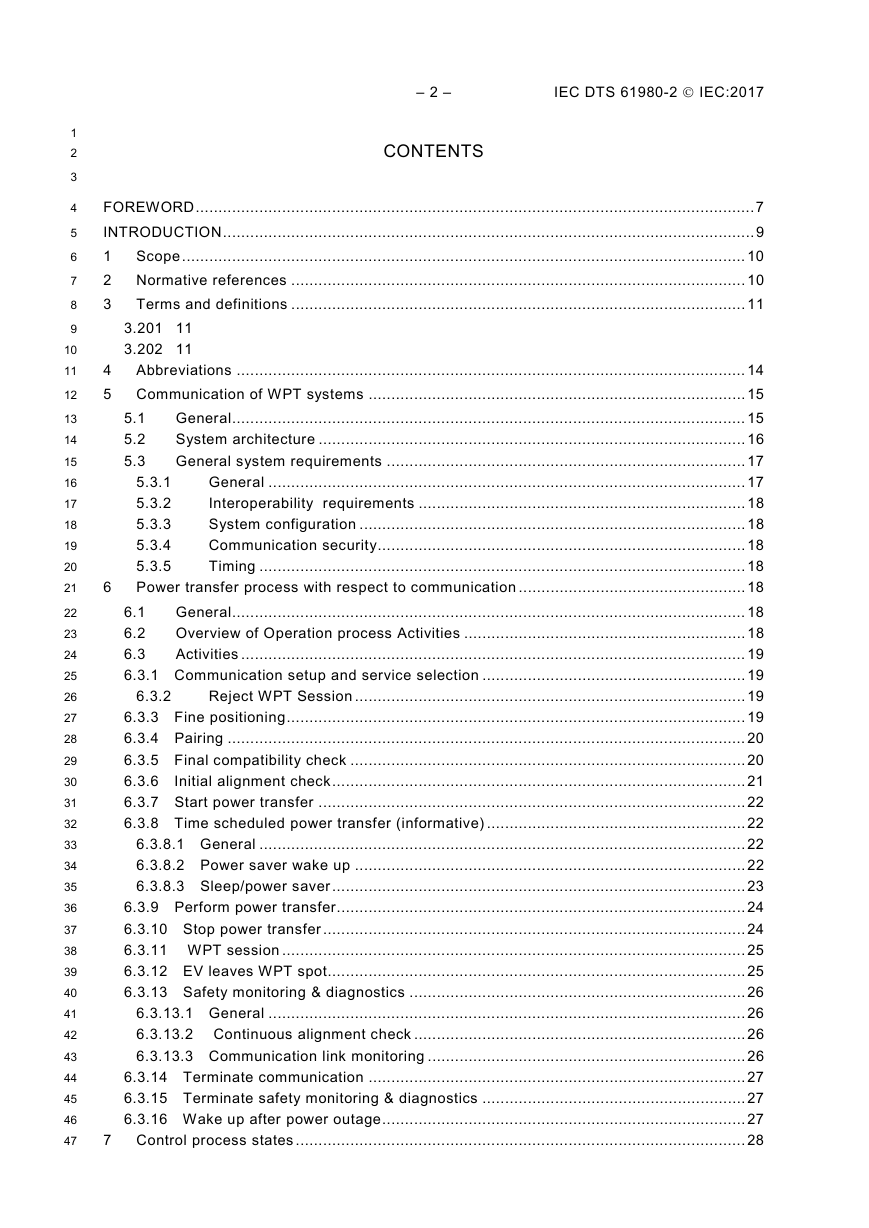
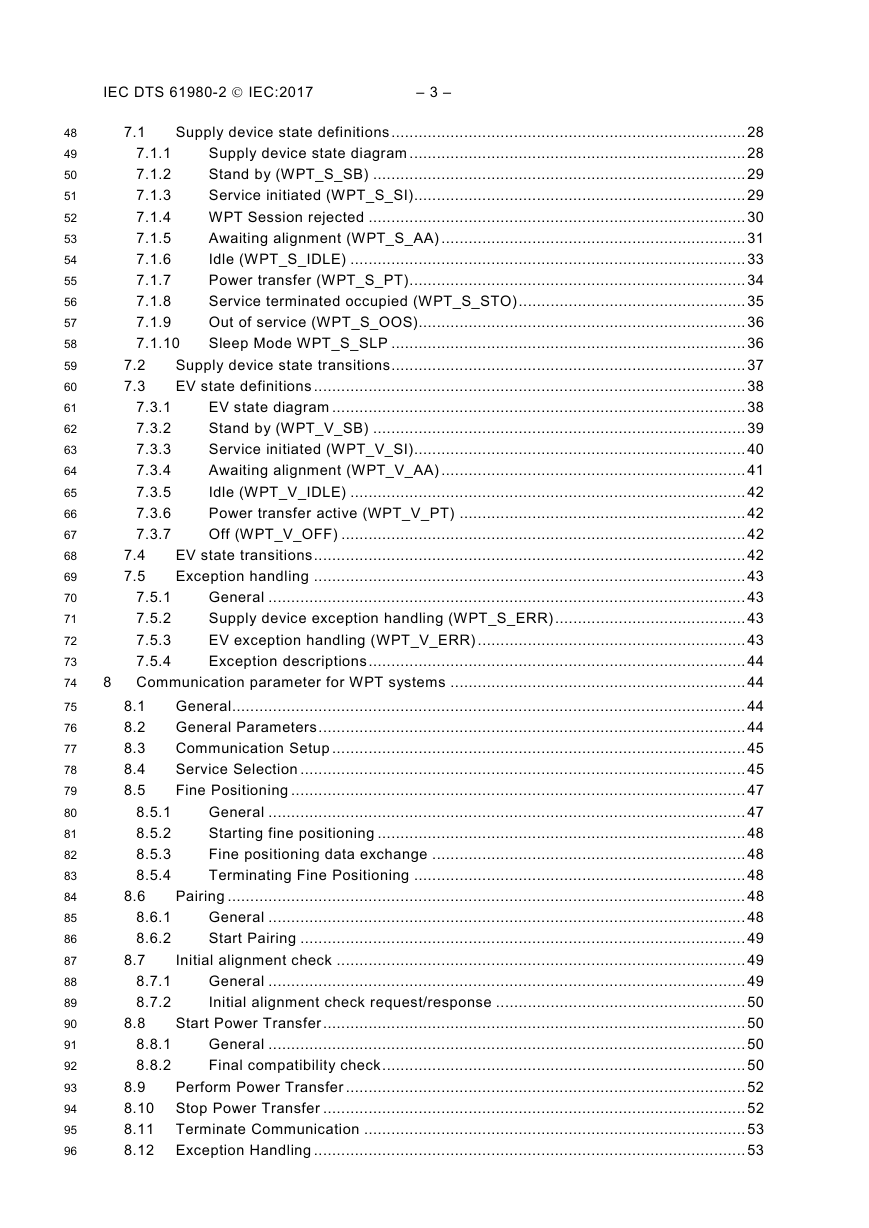
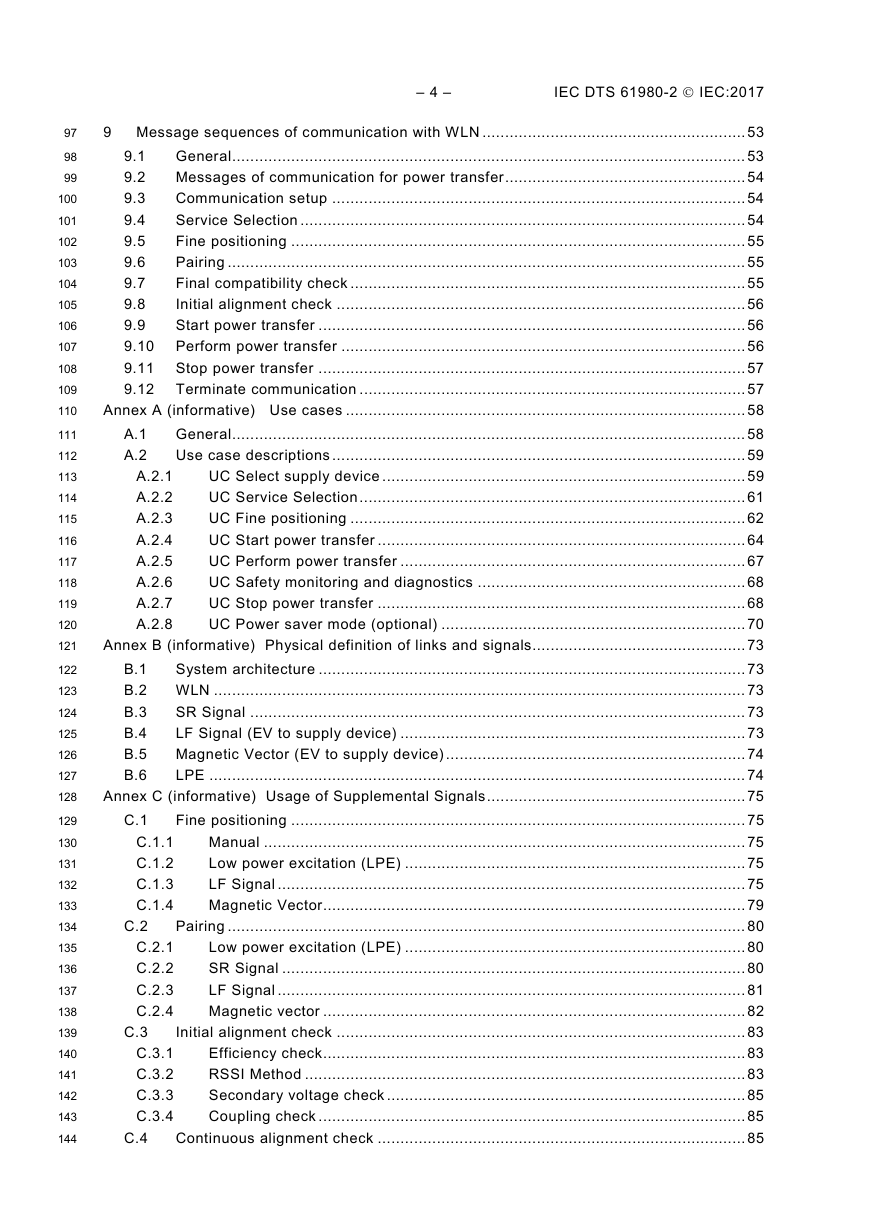
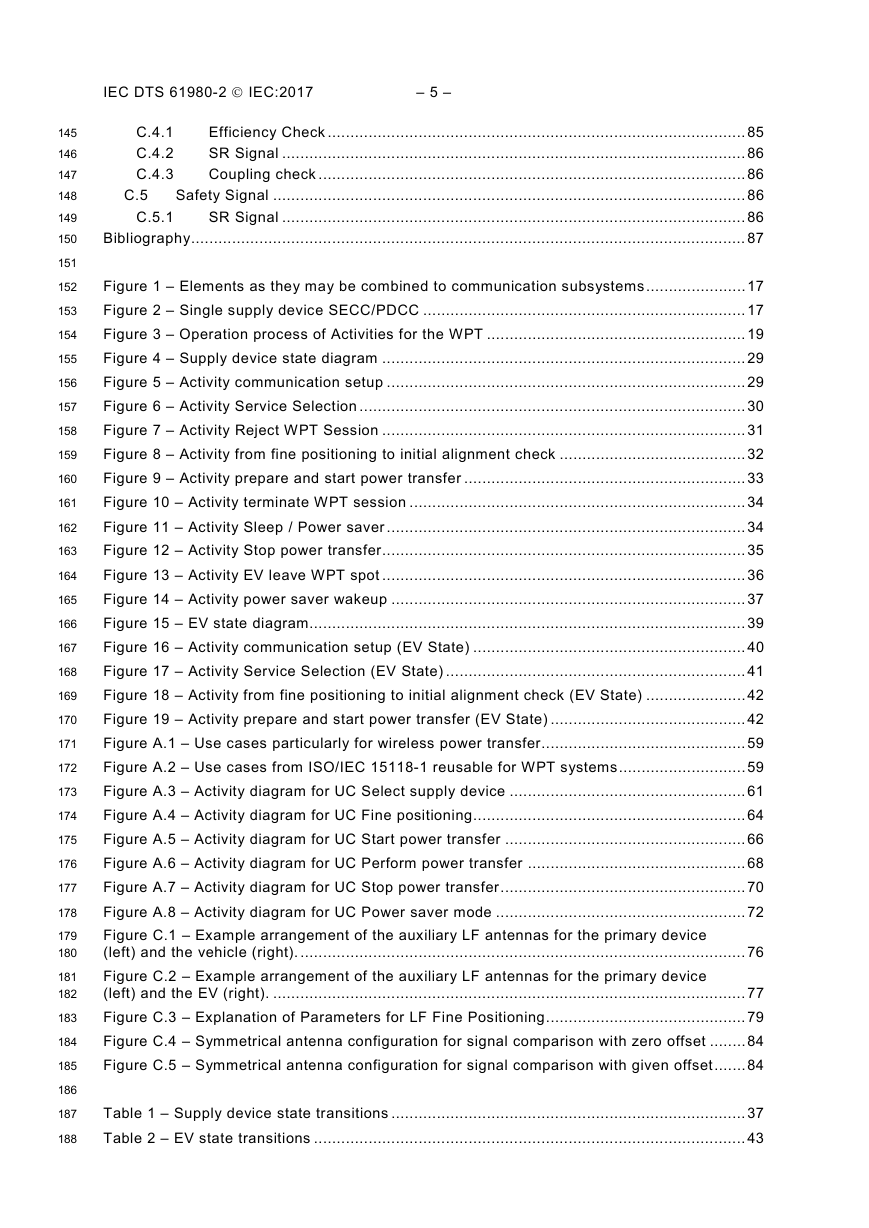
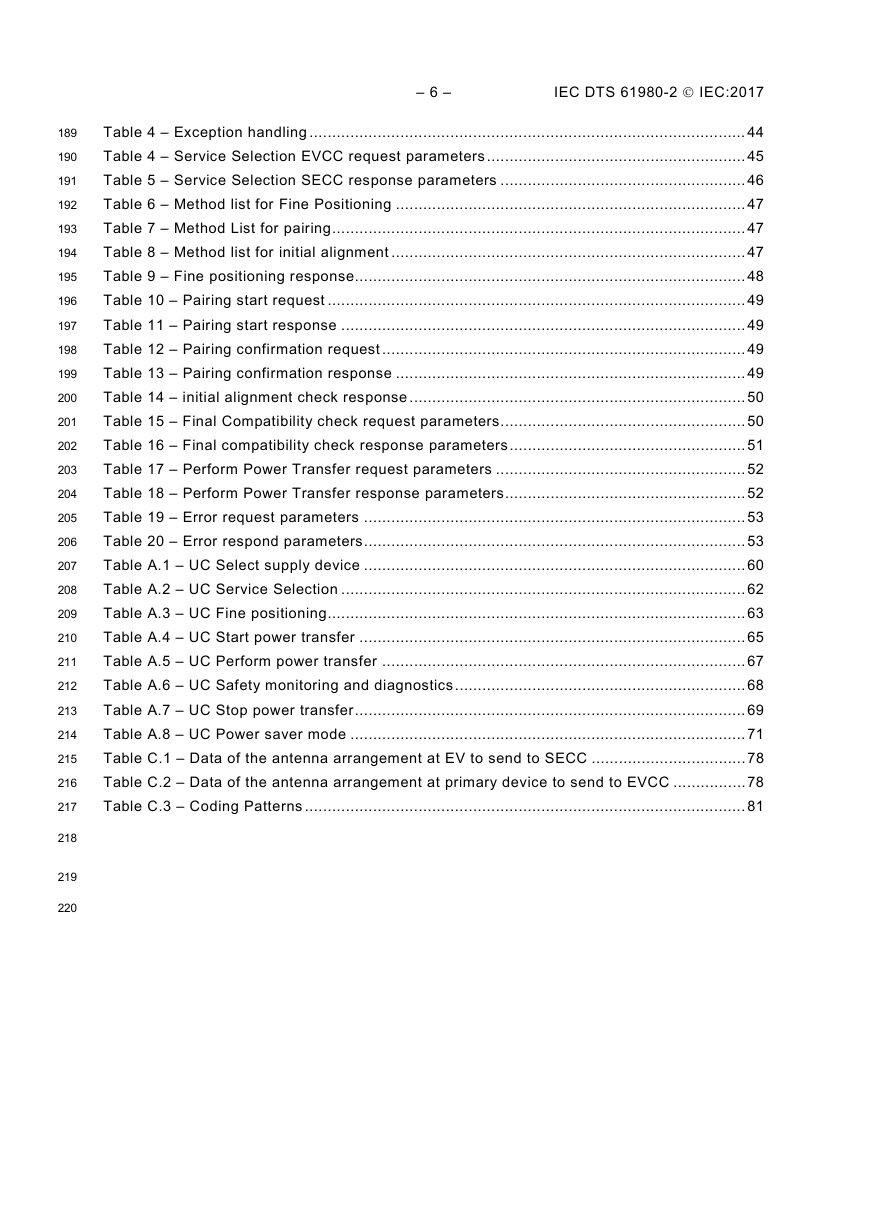
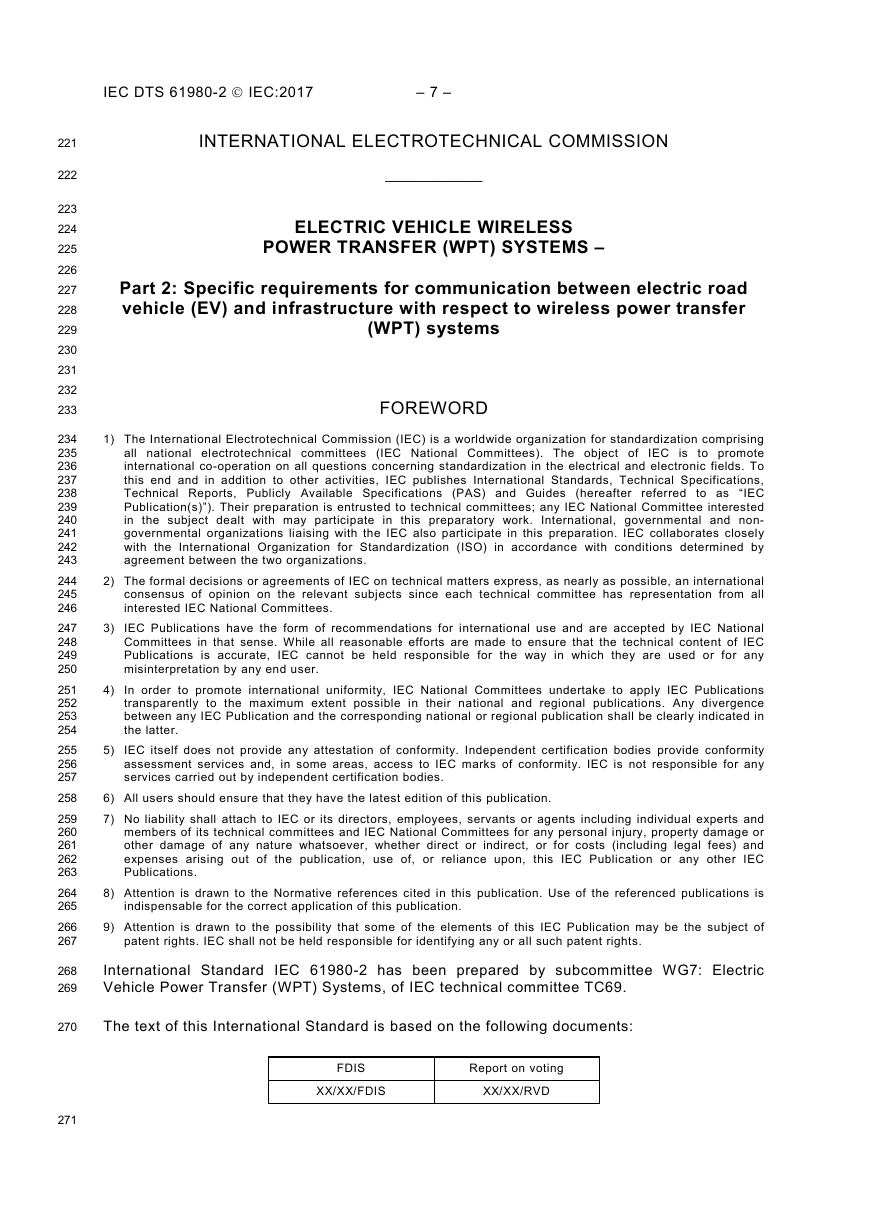








 2023年江西萍乡中考道德与法治真题及答案.doc
2023年江西萍乡中考道德与法治真题及答案.doc 2012年重庆南川中考生物真题及答案.doc
2012年重庆南川中考生物真题及答案.doc 2013年江西师范大学地理学综合及文艺理论基础考研真题.doc
2013年江西师范大学地理学综合及文艺理论基础考研真题.doc 2020年四川甘孜小升初语文真题及答案I卷.doc
2020年四川甘孜小升初语文真题及答案I卷.doc 2020年注册岩土工程师专业基础考试真题及答案.doc
2020年注册岩土工程师专业基础考试真题及答案.doc 2023-2024学年福建省厦门市九年级上学期数学月考试题及答案.doc
2023-2024学年福建省厦门市九年级上学期数学月考试题及答案.doc 2021-2022学年辽宁省沈阳市大东区九年级上学期语文期末试题及答案.doc
2021-2022学年辽宁省沈阳市大东区九年级上学期语文期末试题及答案.doc 2022-2023学年北京东城区初三第一学期物理期末试卷及答案.doc
2022-2023学年北京东城区初三第一学期物理期末试卷及答案.doc 2018上半年江西教师资格初中地理学科知识与教学能力真题及答案.doc
2018上半年江西教师资格初中地理学科知识与教学能力真题及答案.doc 2012年河北国家公务员申论考试真题及答案-省级.doc
2012年河北国家公务员申论考试真题及答案-省级.doc 2020-2021学年江苏省扬州市江都区邵樊片九年级上学期数学第一次质量检测试题及答案.doc
2020-2021学年江苏省扬州市江都区邵樊片九年级上学期数学第一次质量检测试题及答案.doc 2022下半年黑龙江教师资格证中学综合素质真题及答案.doc
2022下半年黑龙江教师资格证中学综合素质真题及答案.doc